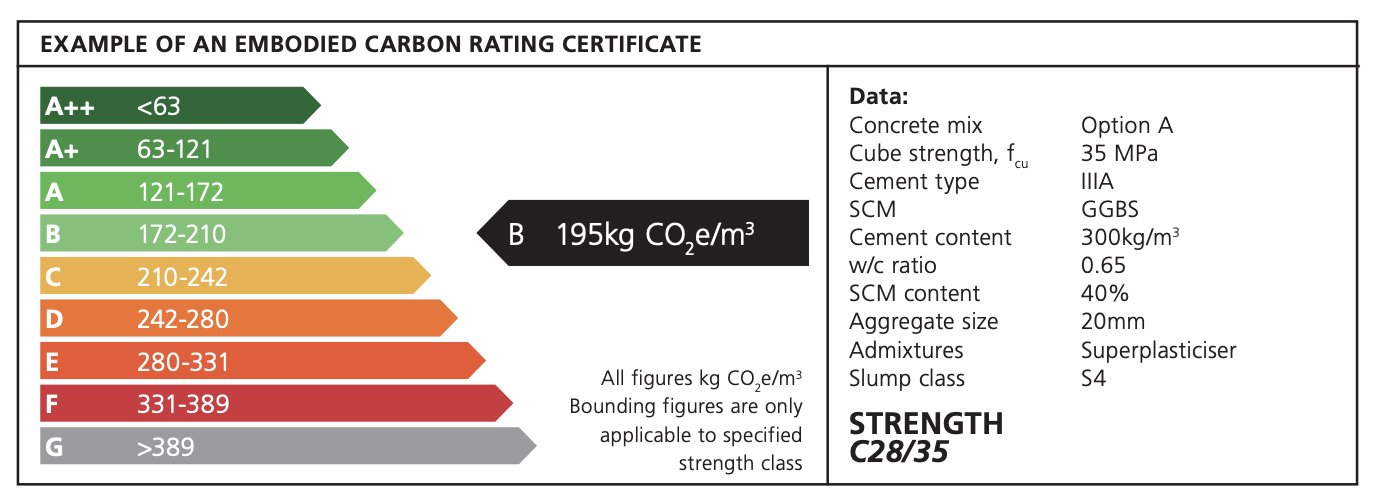
Call for carbon rating system for concrete
Construction experts have proposed a standardised concrete carbon rating system to make it easier for clients and designers to choose low-carbon options.
It is one of the chief recommendations set out in a Low Carbon Concrete Routemap to set out a path for reducing the impact of concrete on global co2 emissions.
The report is the result of a collaboration between the Green Construction Board and the Institution of Civil Engineers.
It brings together experts from across the industry including the Concrete Centre, Mott MacDonald and Cemex.
The report sets out three decarbonisation paths to 2050. They are based on what action the industry takes and how fast carbon sequestration in concrete advances.
Even under the most modest route, emissions are expected to fall from 10 million tonnes CO2e in 2022 to 5m tonnes in 2035.
Under the most optimistic scenario, the concrete industry could become a carbon sink – absorbing more greenhouse gases than it emits – in the 2040s.
The report also predicts this will lead to major cost savings, ranging from £2.5bn to £10.5bn by 2050, depending on how quickly the industry decarbonises.
Recommendations

• An industry-wide rating system to disclose the carbon embedded in different concrete mixtures, similar to the energy efficiency ratings for homes
• Options for reducing the cement content, especially by using limestone and calcined clays as fly ash and blast furnace slag become less available
• Design approaches that use less concrete or lower-carbon concrete, such as using voids, coffers, non-structural fill and smaller spans between columns
• Giving concrete suppliers maximum time and flexibility to choose a mix that meets the requirements with the minimum carbon
• Updating technical standards to reflect the priority of reducing carbon and the latest materials and techniques
updated: 05/05/2022
Let us know what you think:
You are here: Blog / Call for carbon rating system for concrete
